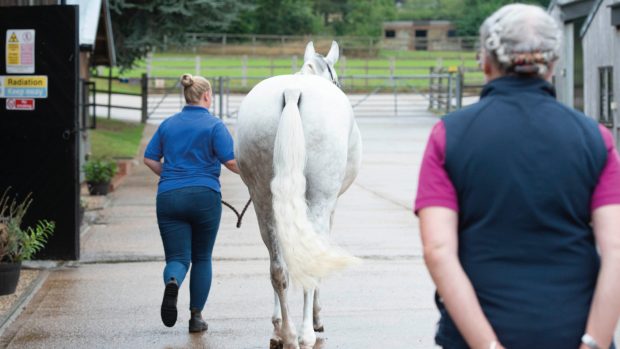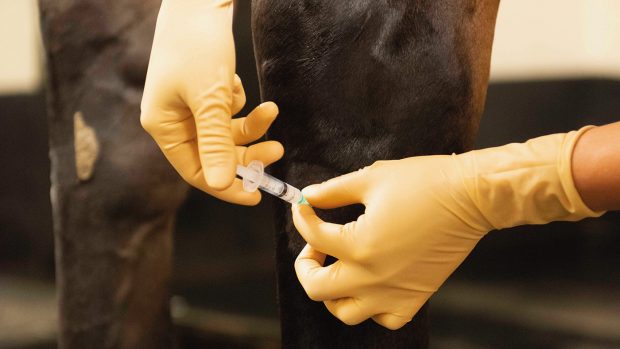Every New Year, the veterinary world looks forward to revolutions in equine healthcare; revolutions that will allow us to keep our horses fitter for longer or allow them to recover from previously untreatable conditions.
However, the medical “breakthroughs” so frequently reported by some parts of the media rarely occur in such a dramatic fashion. More commonly, researchers will work on an idea over several years and, as the work progresses, so new ideas develop and are tested. Slowly, these evolve into new diagnostic methods or treatments.
Magnetic Resonance Imaging (MRI)
For many years the diagnosis of lameness problems in horses has relied heavily upon radiography (X-rays). Many common orthopaedic diseases — including spavin, laminitis and chip fractures of bones in the knee — have well-characterised changes that can be detected on an X-ray.
But, like all diagnostic techniques, X-rays have limitations. In particular, they are rarely good at showing up changes in soft tissues, such as tendons, ligaments and cartilage that form the articular surface of joints.
MRI is an important diagnostic imaging tool in human medicine. It works by subjecting tissues to pulses from a high-powered magnetic field, which cause temporary changes in the electrical properties of cells. When the magnetic field is released, the tissues revert to their former electric state, releasing energy that can be detected. Different tissues release different amounts of energy, allowing an image to be created.
In human medicine, MRI is used for a wide range of applications, including imaging diseased joints and the spines of patients with back pain and the investigation of unusual lumps anywhere in the body.
The major limitation in developing MRI technology for the horse has been the expense and technical difficulty of getting the affected part of the animal into the imaging magnet.
However, a system has been designed specifically for horses, which allows the lower leg — the site most commonly in need of imaging for lameness problems — to be imaged while the animal stands. The “standing MRI” system eradicates the need for a general anaesthetic, and the resulting images are usually good enough for diagnosis.
MRI is very different from X-rays and ultrasound, and vets are still learning how to interpret the MRI images and how they relate to injuries and diseases that cause lameness. However, some excellent work in this area has already been done, notably at the Animal Health Trust in Newmarket.
MRI has allowed vets to identify and diagnose diseases that were previously a mystery. In particular, the causes of pain in the horse’s foot are beginning to reveal themselves and are becoming diagnosable.
SUBSCRIBE TO HORSE & HOUND AND SAVE Enjoy all the latest equestrian news and competition reports delivered straight to your door every week. To subscribe for just £1.43 a copy click here >>
|



